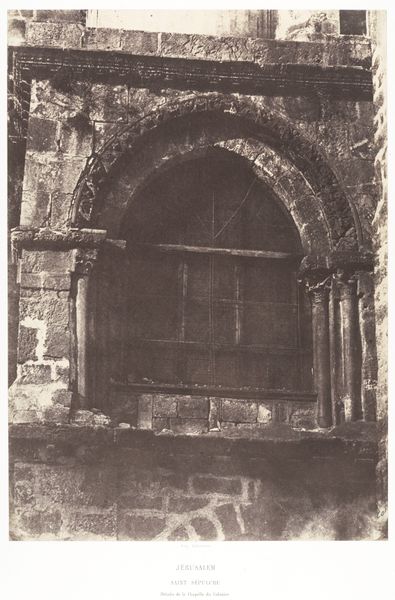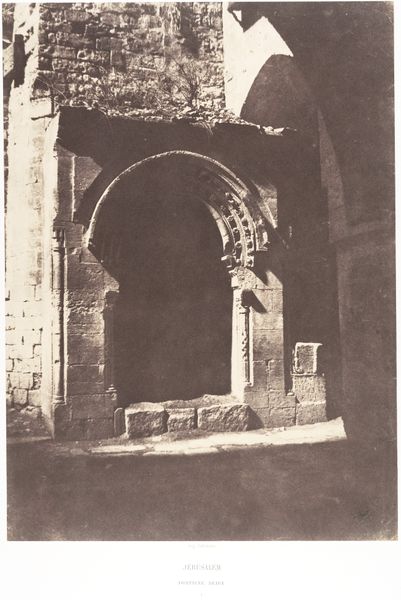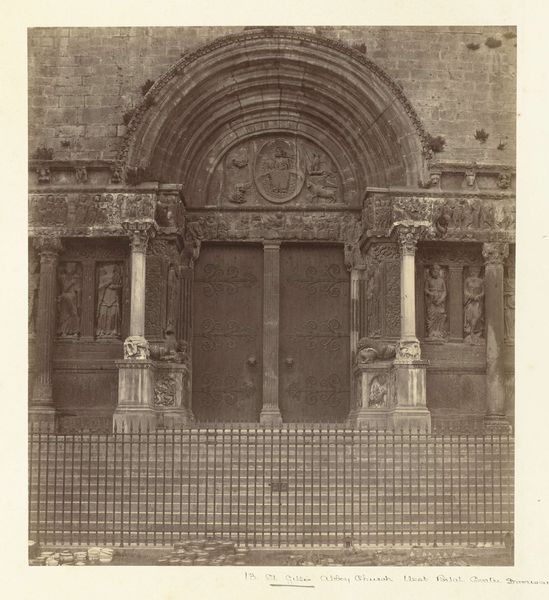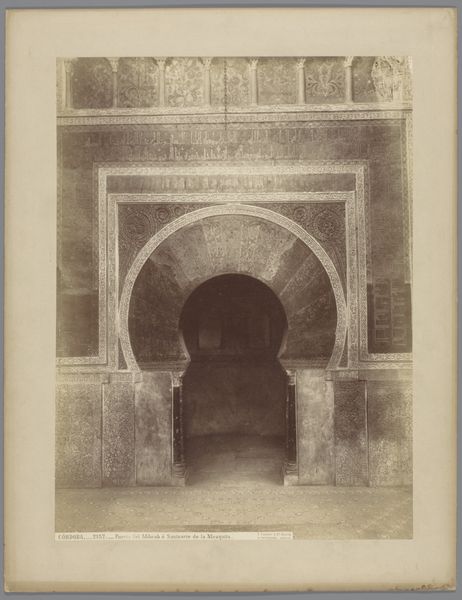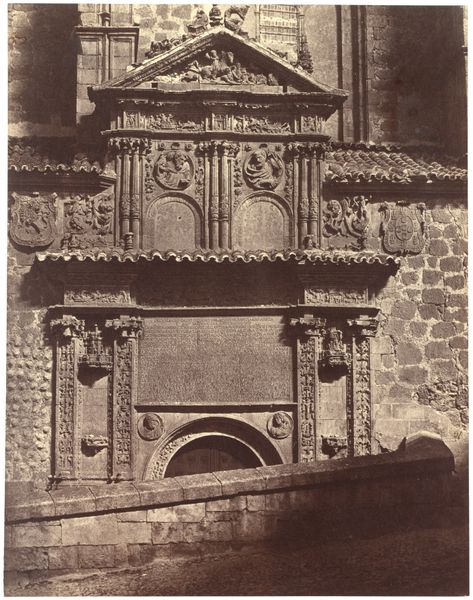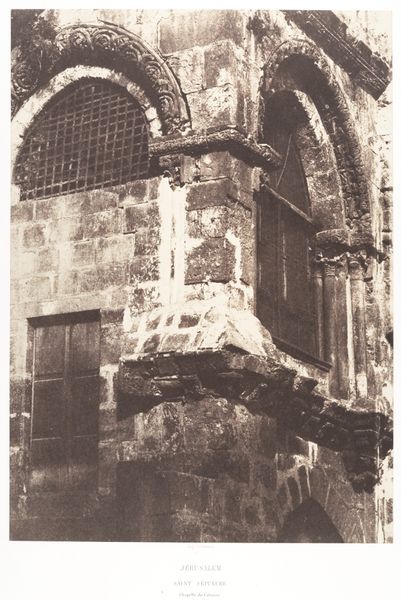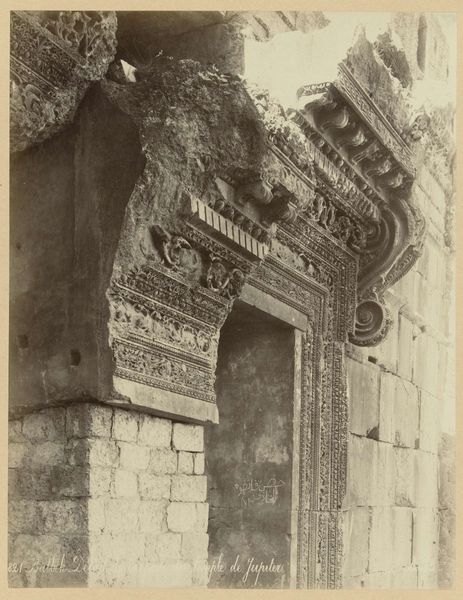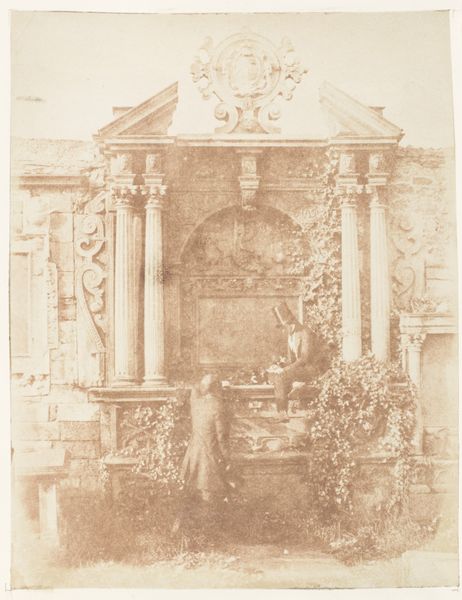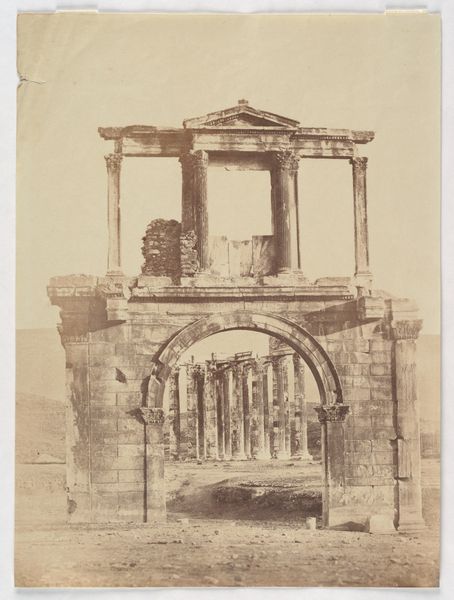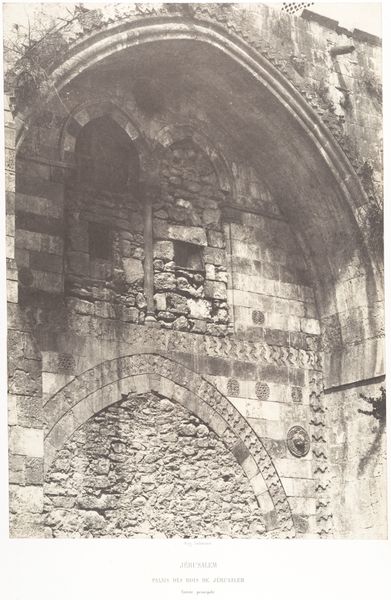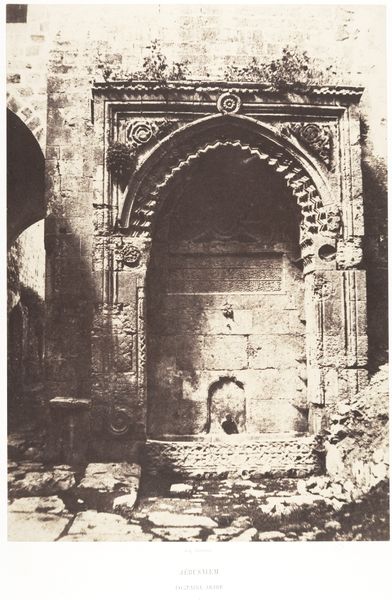
Versierde boog van de zomerpreekstoel van de Al-Aqsamoskee op de Tempelberg, Jeruzalem c. 1867 - 1877
0:00
0:00
photography, architecture
#
landscape
#
photography
#
ancient-mediterranean
#
cityscape
#
islamic-art
#
architecture
Dimensions: height 277 mm, width 214 mm, height 559 mm, width 468 mm
Copyright: Rijks Museum: Open Domain
Curator: This fascinating photograph, taken between 1867 and 1877, by F\u00e9lix Bonfils, captures a section of the decorated arch of the summer pulpit within the Al-Aqsa Mosque on the Temple Mount in Jerusalem. The piece resides in the Rijksmuseum. Editor: Immediately, I’m struck by the sheer weight of history embedded within the stone. The monochrome image lends it a timeless quality. I see layers of cultural significance clinging to its surface. Curator: Absolutely. The Al-Aqsa Mosque is a crucial site in Islam. The arch, framing what would have been a vibrant, active space, possesses symbolic importance that is intensified through Bonfils' compositional choices, drawing focus on the site's legacy. Editor: It makes me think about the political realities interwoven with religious sites. Considering Bonfils was working during a period of intense colonial interest in the Middle East, how might his photography reflect those power dynamics? The act of capturing this sacred space transformed it into an object for Western consumption, and perhaps control. Curator: An insightful point. His work offers a visual archive of architectural and artistic features, allowing a form of cultural preservation. In viewing Bonfils’ documentation, we see the continuation of styles of ornamentation over generations and, furthermore, recognize how deeply symbols such as geometric designs are steeped in faith and community. Editor: Precisely. And let's not forget the photographic process itself. What visual cues emerge out of the interaction between nineteenth-century photographic technology and this ancient site? What's amplified and what's suppressed by its lens? Curator: Perhaps there’s a meditative element inherent in that stillness, calling forward the echoes of countless sermons within. It almost seems as though we’re glimpsing not just a structure, but an enduring idea, a historical landmark and a reflection on humanity’s constant attempt to build, define, and ultimately consecrate the spaces we hold most sacred. Editor: I agree. And looking at this, it’s vital we recognize how such places, both architecturally and ideologically, continue to shape our world and political discourses today.
Comments
No comments
Be the first to comment and join the conversation on the ultimate creative platform.
